Two thousand years ago, the N times when the waves began in Guangxi, which changed the world ...
Author:Guangxi Satellite TV Time:2022.09.17
On September 16, 2022, the China -ASEAN Expo opened in Nanning, Guangxi. In the past 19 years, the East Expo, as one of the most successful and most vibrant models in the Asia -Pacific regional cooperation, has become a vivid example of promoting the establishment of a community of human destiny. Guangxi, as early as two thousand years ago, rely on the unique geographical advantages and resource advantages, wrote a bright chapter in the history of the Maritime Silk Road.
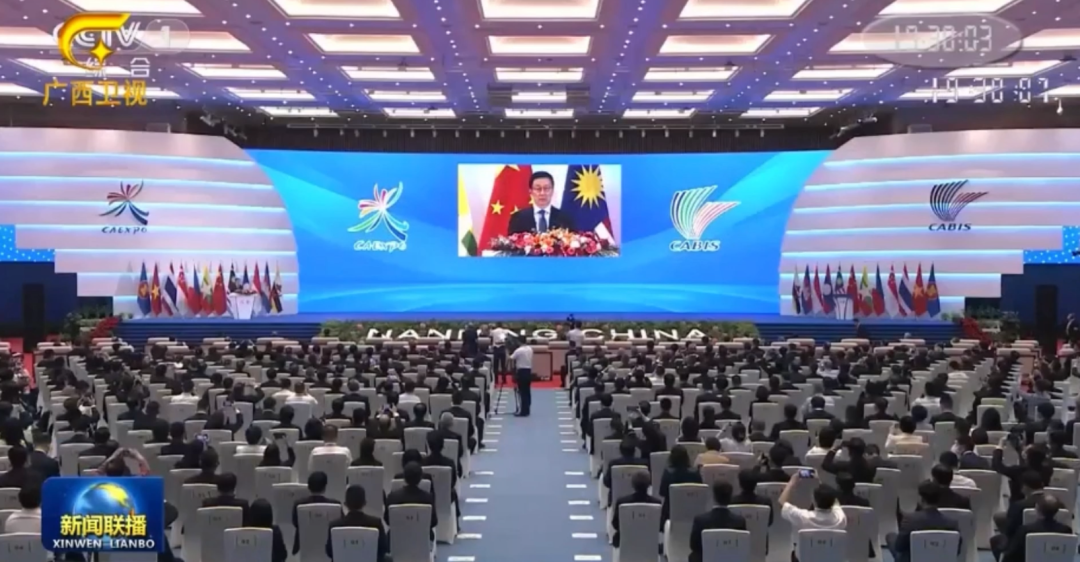
In today's Hepu Han Dynasty Cultural Museum, more than 5,200 precious cultural relics were collected, of which more than 1,300 cultural relics came from outside the domain. These brilliant glory, the strange treasures from the ancient civilizations of Eurasia, have appeared in Hepu more than 2,000 years ago?
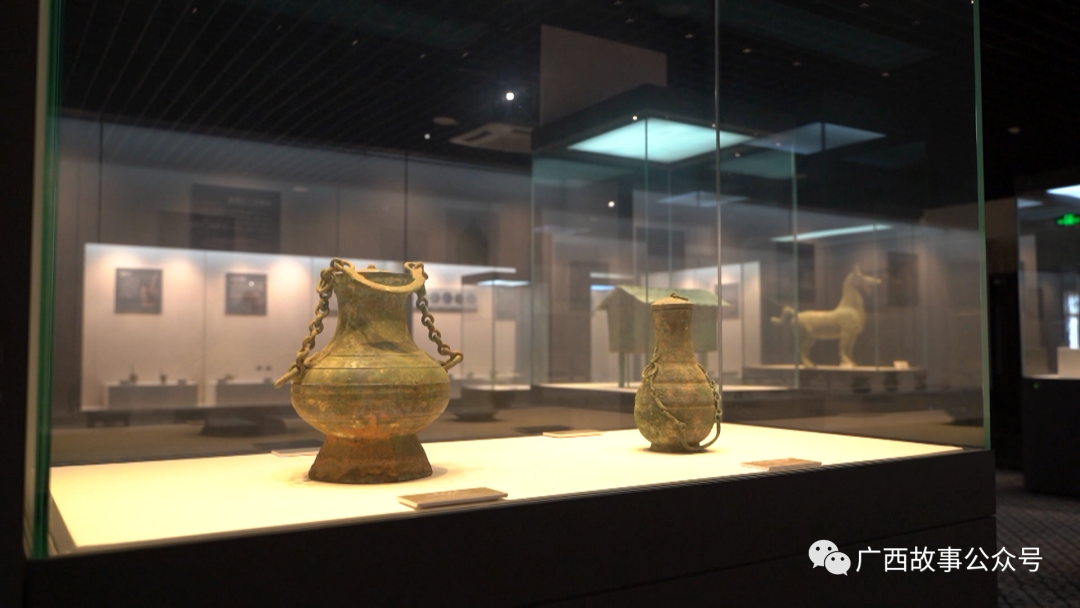
Eastern Han scholar Ban Gu records in his "Hanshu • Geography" written in his writing: From the Nikko -Southern Observation, Xu Wen, and Hepu Shipping May, there are metropolitan countries; However, for more than 20 days, there are leaving the country; walking can be walked for more than ten days, and there are husbands Gan Du Lu. Since the husband of the husband, the Lu Guo ship can be more than February, there is Huang Zhiguo ... the south of the Huang Zhi, there is no country. "
This is the earliest text record about the Maritime Silk Road, and it is also the first time in Guangxi to open his arms. For the first time, it is the heavy responsibility certificate for China to the sea economic channel. Amber, crystal, green pillar stones, and gold beads have continued to enter the Central Plains through Guangxi. At that time, in addition to using the crazy silk of the domain, what did you use to pay?
Two golden cakes were unearthed in the Han Tomb No. 1 of Wang Nioling excavated in 1971. The golden cake is round, the front is sunken, a weighing 249 grams, and the word "big" is engraved inside. The other weighs 244.9 grams, engraved with the word "Ruan", and engraved a "bit" word above Ruan's character.
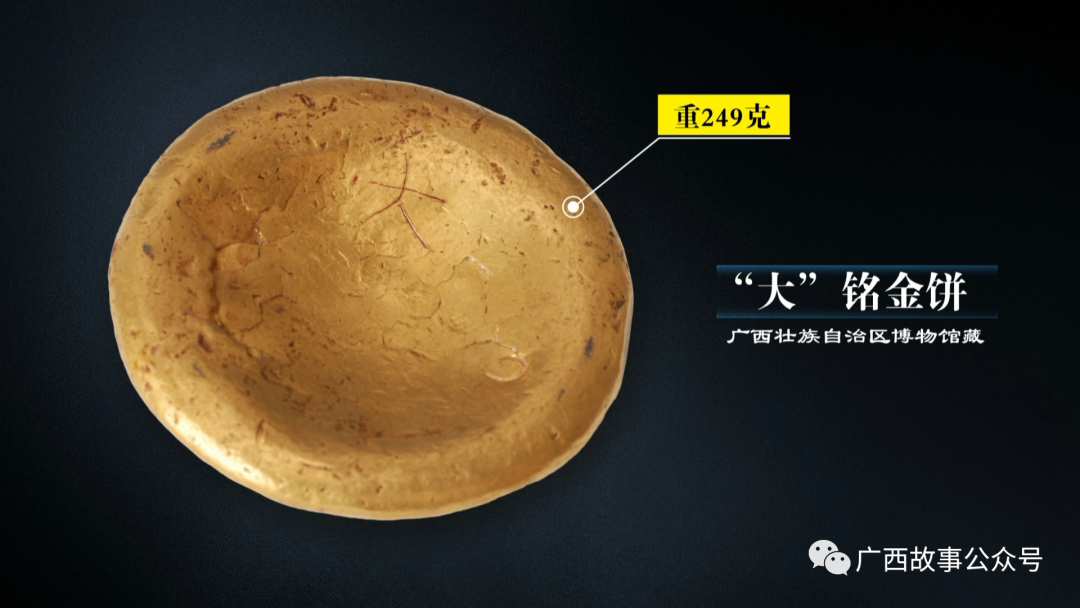
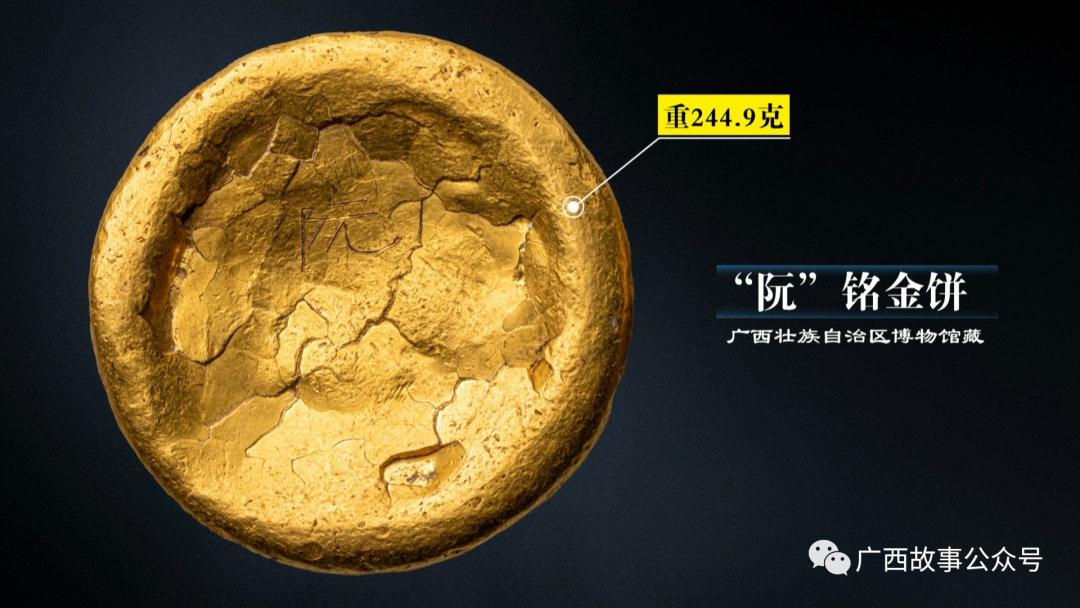
After Qin unified the six kingdoms, gold was officially announced as a legal currency. The Qin system of the Han Dynasty set the gold as a currency, which was mainly used for rewards, gifts and currency payment for foreign trade. This golden cake is commonly known as persimmon gold, also known as "cake gold". In 2015, a large number of gold wares were unearthed from the tomb of Liu He, Haixunhou, with 385 light gold cakes, and the golden light shocked the world. In the Han Dynasty, gold was calculated in the units of the catties. The weight of the two gold cakes unearthed from the Tomb of Wang Niuling 1 was in line with the current record of a pound of gold.
So what can such a golden cake (250 grams) buy in the Han Dynasty? Some experts are calculated based on the unearthed "Juyan Hanjian" and "Nine Chapters" and "Hanshu". In the middle and late Western Han Dynasty, a golden cake can buy 1250 catties of pork, or 25 puppets, or 40 sheep, or 40 sheep, or 142 chicken. If you buy food, you can buy 50 stones in a golden cake. According to the record of eating 4 liters a day (about 200 grams of about 200 grams), a person can eat 1250 days.
Gold has been hard currency since ancient times, easy to carry and high price, and is the preferred delivery currency for large transactions. This is consistent with the historical facts of "Hanshu" recorded "赍 赍 这 缯 缯 缯", which speculates that the purpose of these two gold cakes is to conduct overseas trade transactions.
After the Han Dynasty opened this ocean trade route, businessmen from various countries along the way were full of longing for the strong Han Empire, and some adventurers were crossing the sea and lived in Hepu.
Compared with other exquisite cultural relics unearthed from Hepu, this green pot is not amazing and damaged, but it is the treasure of the town hall of the Hepu Han Dynasty Cultural Museum. From the perspective of the shape, this pot pot has a typical Persian style. After scientific comparison, it is found that it is the same as the Pot pot component of the Emperor Empire unearthed from the Saiyucia site unearthed in the Euphrates. , And the only one of the Han Dynasty Persian pot pottery pot. Persia is the current Iran. It shows that as early as the Han Dynasty, my country form a huge Chinese and Western trade network with Southeast Asia, South Asia, and West Asia.
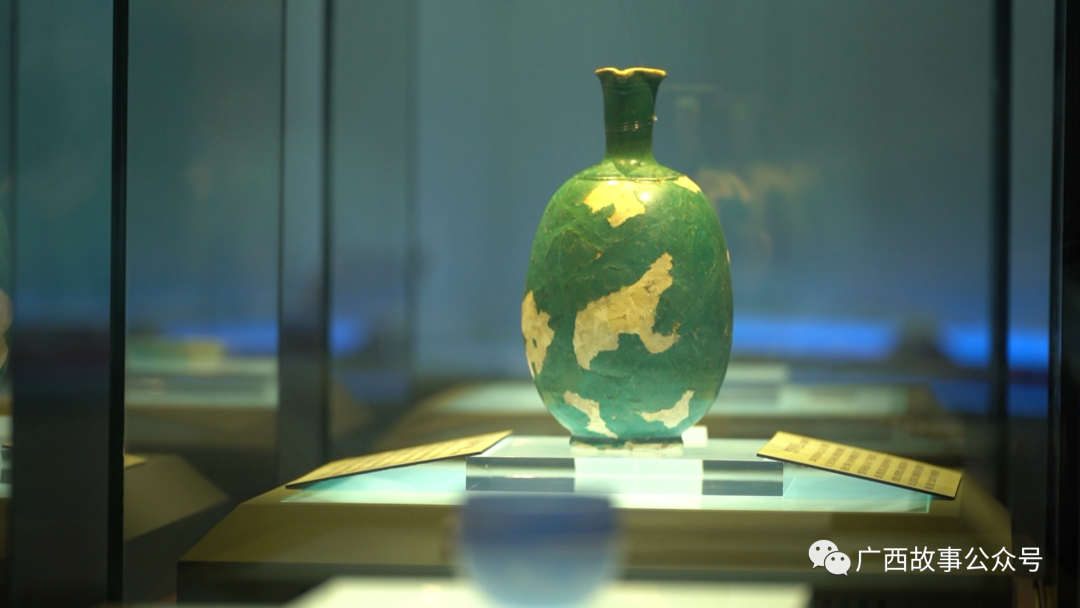
(Persian pottery pot national second -level cultural relics)
In addition to the wealthy businessmen who came, there were also vendors at the bottom. This is a pottery lantern unearthed in Guigang, Guangxi. The lamp seat is a naked -shaped, deep -eyed nose, and a beard full of beard. He saw that he stared at his eyes and stretched his tongue slightly, showing a surprising expression. The lower feet were close, squatting with knees, and the real image jumped in front of him. In addition, a number of Hu people's campaign lamps were also unearthed in the Han tombs in Hepu, Hezhou, Wuzhou, etc., and it is easy to distinguish them from outside the domain.

(National second -level cultural relics)
With the development of the "Maritime Silk Road" and the prosperity of overseas trade, as the starting port of the Maritime Silk Road, Hepu became the intersection center of different cultures in the world at that time. Traditional Culture.
By the Sui and Tang dynasties, due to the continuous fire of the Western Regions, the Silk Road on the land was blocked by the war, and the "Maritime Silk Road" had undergone unprecedented development. Although Guangzhou has replaced Hepu to become China's largest foreign trade port at this time, the Beibuwan route is still an important channel for China to lead to Southeast Asian countries.
Due to the limitations of navigation technology at that time, ships could only be sailed along the coastal line, while the Beibuwan waters had many reef beaches and unpredictable winds. Li Shangyin, a Tang Dynasty poet, who has served in Guilin, recorded in the "Food of the Monthly Grain of Annan Camp for Puyang Public" that the ships departing from Guangzhou were constantly being hit by bad sea conditions. According to legend, Wang Bo, a talent of the Tang Dynasty, died here. How can we be effective or successful to avoid these dangers? The answer provided by the ancients was to excavate the canal. The Tang Dynasty dug three canals on the coast of Guangxi. The first is the Xikeng Canal connecting the Dafeng River and the Dazao River; the second is the Tan Peng Canal that blocks the Jiangshan Peninsula; the third is the Emperor Gully canal that runs through the two sections of the Sand Peninsula. The three "Tongjiang Dahai" canal not only shorten the voyage, avoids the dangerous and twists and turns, but also facilitates the connection between the interior and the sea in the Beibu Gulf area. Essence In the Tang Dynasty writer Han Yu wrote in "Send Zheng Shangshu Preface", "Foreign goods day to the day, beads, elephant rhinos, 玳瑁, and strange things overflow in China, not to be used." Except for traditional silk gold, the output of porcelain is The emergence of trade with trade has become an important product of best -selling overseas.

In recent years, a lot of water porcelain has been salvaged around the Xikeng Canal and the Tan Peng Canal, and the time has spanned more than 1,000 years from the Tang Dynasty to the Qing Dynasty. These Tang Dynasty pottery bowls, pottery bowls, and pottery discs have been sleeping underwater for more than a thousand years. Under the continuous rubbing with sand and stone, the glazed surface is lost or even peeled.
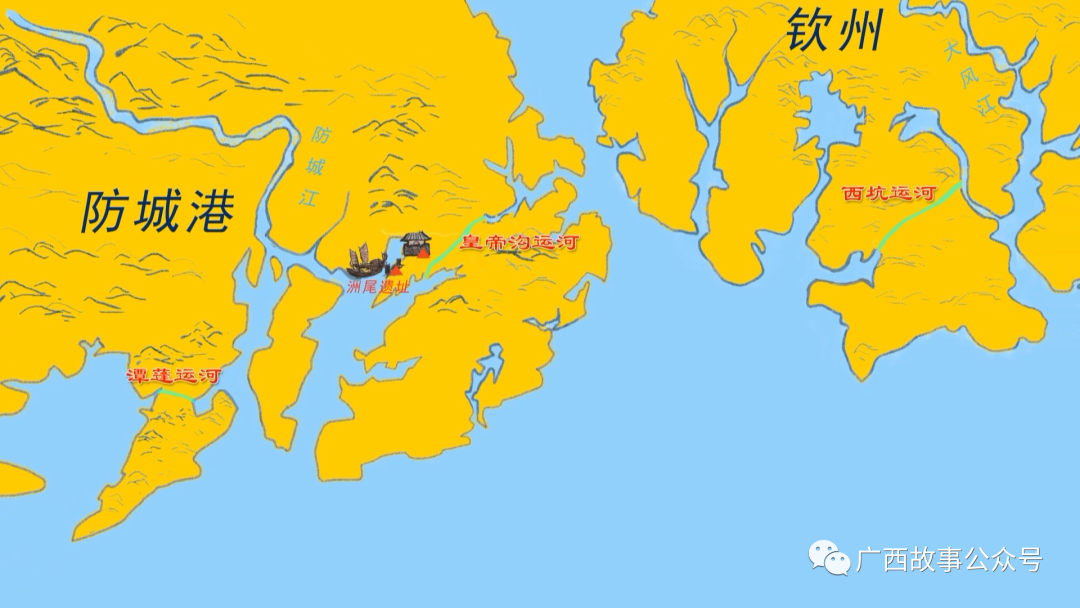
This straight mouth is slightly convergent, and the green and transparent high -foot glazed cup was unearthed in the tomb No. 1 in Jiutong Sui and Tang dynasties in Qinzhou. Liuli is the glass. Although China has its own glass in the Eastern Zhou Dynasty, in the Han Dynasty, domestic glass was not enough, and it has always been the main commodity of overseas trade. So is this glass made local or exported?
(Sui and Tang Dynasties high -foot glazed national first -class cultural relics)
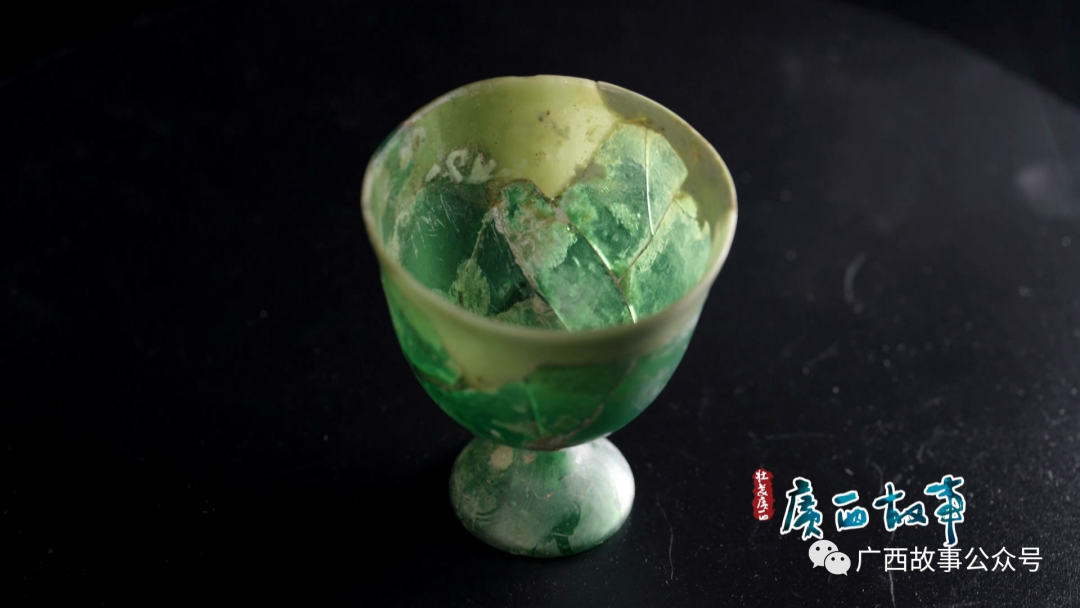
In 968 AD, after Annan's independence, the coastal area of Guangxi Beiban began to change from the original inner county to the frontier. This changes in the nature of the nature of the coast of Guangxi have risen rapidly. With Annan's initiative to submit tribute, the Song Dynasty set up three Bargains in Guangxi. Among them, the largest ones belonged to Qinzhou Boyi.
Zhou Huifei recorded the grand occasion of Qinzhou Boyi Field in "Answers of the Ridge". The international caravan with a variety of goods comes from Annan. Qinzhou gradually replaced Guangzhou and Lianzhou, becoming the main estuary of China and Annan, and the transportation hub of the western South China Sea.
The Song Dynasty Expo is like an ancient China-ASEAN Expo. With the sails raised, it continuously transported Chinese manufacturing to all parts of the world, and also allowed the world to experience the charm of Chinese culture lasting. So what are the products of the Boyi Side? What exchanges and exchanges between Guangxi and Southeast Asia and other countries after the Song Dynasty? What impacts have it on them? Next week, I will continue to tell you the legendary past of the ancient Maritime Silk Road trade in Guangxi.
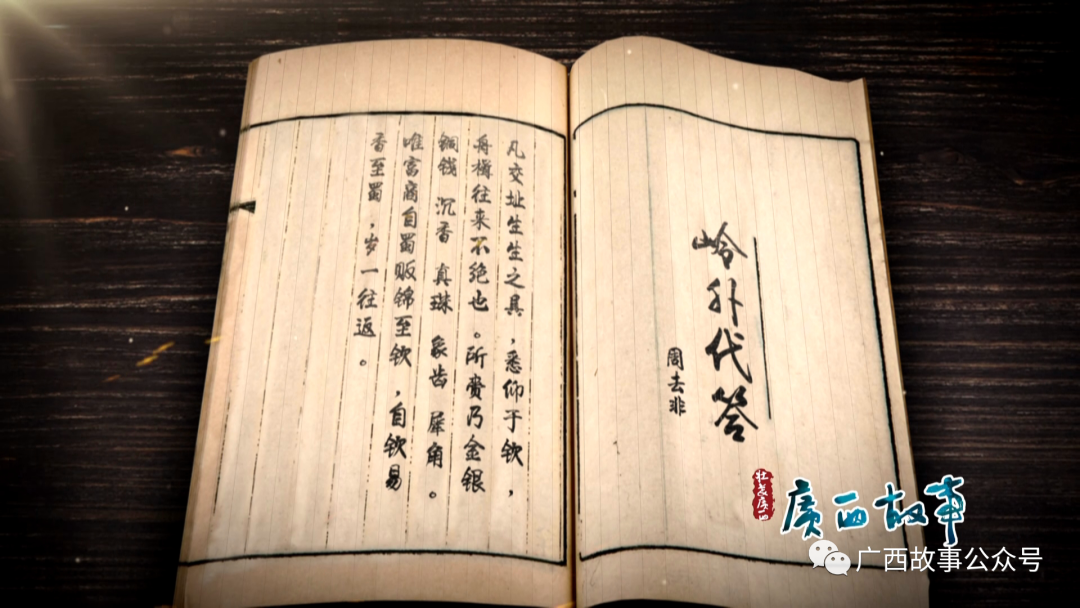
For more exciting, please follow
- END -
For three years, we should understand these!
01You must learn to save money, be in peace of mind, do not resign casually, do no...
Ji Xianlin: The best state of life is to live realistic
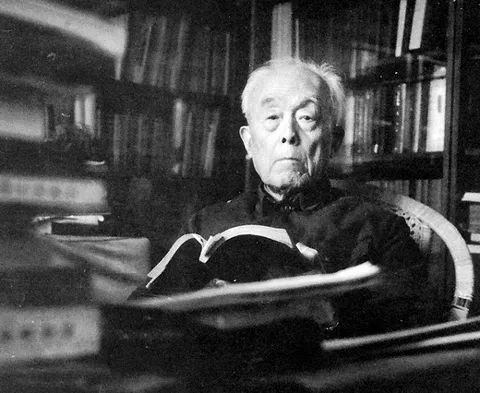
From ancient times to the present, at home and overseas, there is no 100 % complet...